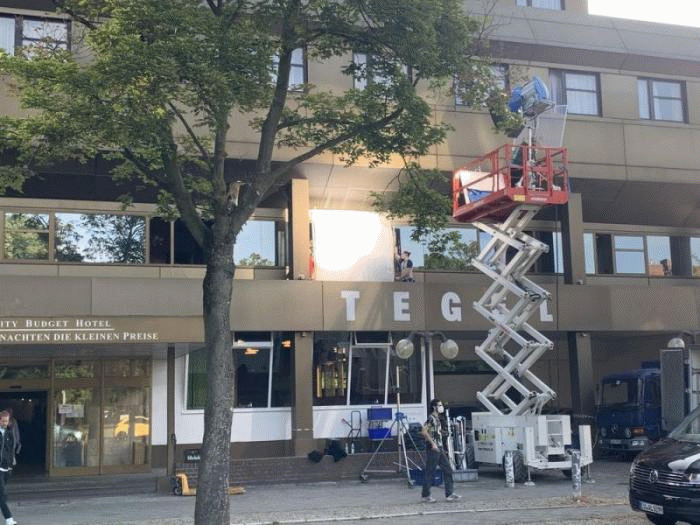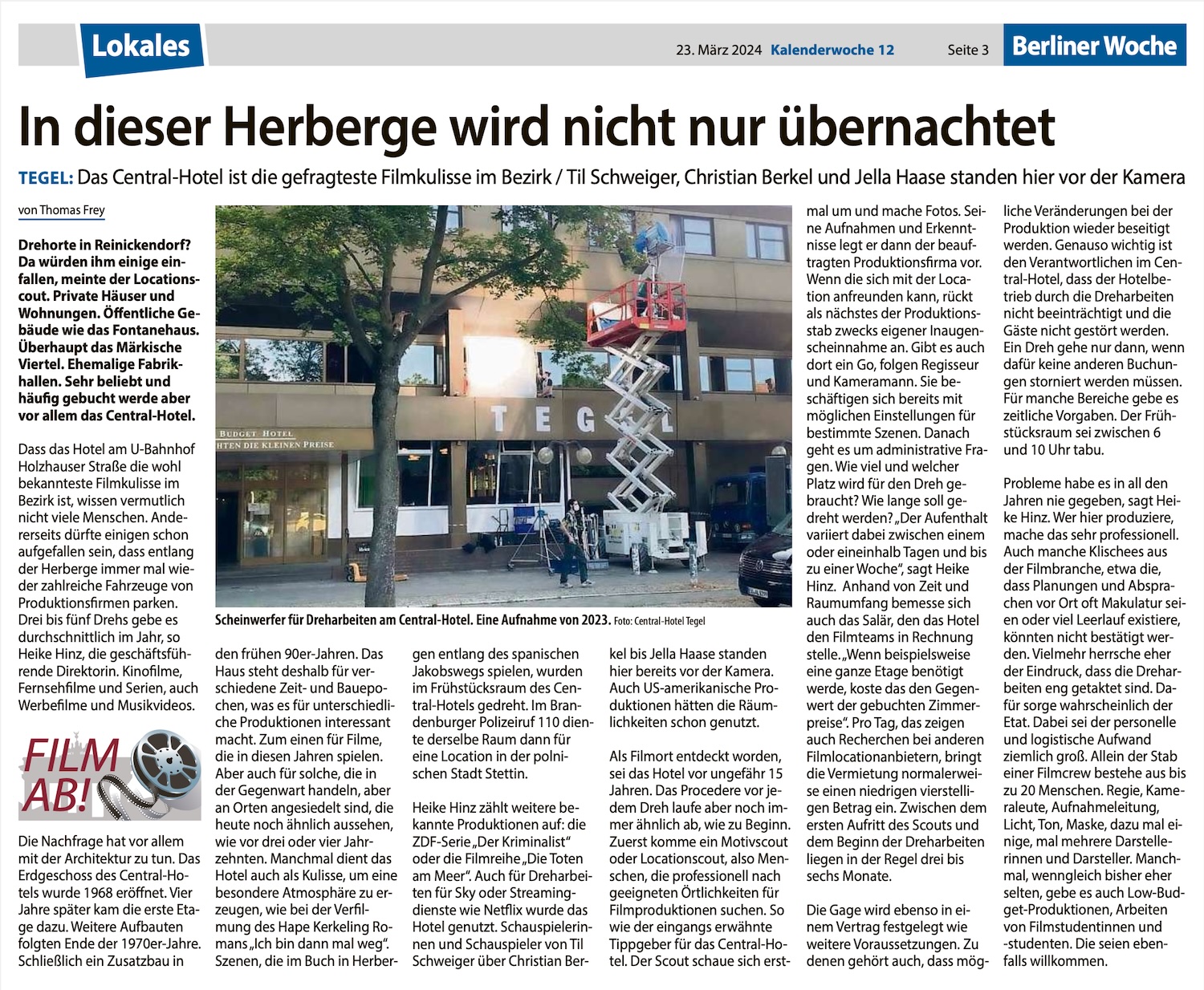Film Set
Several parts of the hotel date back to the 1970s but have been modernized to preserve the charm of that era. As a result, the hotel is a popular location for film and cinema productions, such as:
Film List
- “I’m Off Then” (2015)
- “Hitman: Agent 47” (2015)
- “Kleo” Season 1+2 (2022 and 2024)
- “The Dead by the Sea – Death at the Cliff” (2024)
Filming Day

Filming day at the hotel
History
The Central-Hotel was a luxury hotel in Berlin. It opened in 1881 at Friedrichstraße Station in Berlin-Mitte and was destroyed in 1945 during air raids.
After World War II and the division of the city, the name “Central” was not revived by a traditional hotel business in either part of the city. The long-established entrepreneurial family Wegner, active in Berlin since 1926, took this up and, at the end of the 1960s, began building a hotel near the expanding and newly constructed Berlin-Tegel Airport (TXL), which was later expanded over the following decades. The adjacent U-Bahn station “Holzhauser Straße” on line U6 encouraged the investors to revive the name “Central-Hotel” – especially since the U6, as a north-south connection, also stops at Friedrichstraße. Subsequently, the family established further hotels under the same name, expanding it with the local reference to “Central-Hotel-Tegel.”
The “Central-Hotel-Tegel” is considered an architectural landmark of so-called Brutalism. Brutalism is a style of modern architecture that became widespread from 1950 onward. The term originally referred to an architectural approach with an idealistic claim of authenticity in material and construction, and ethical responsibility in the social aspects of architecture. Today, the term is more broadly defined and generally refers to the dominant architecture between about 1960 and the early 1980s. This style is characterized by the use of exposed concrete, emphasis on construction, simple geometric shapes, and often very rough structural execution. At the beginning of the 21st century, a phase of rediscovery of Brutalism began, particularly in response to demolitions or disfiguring renovations of such buildings. Architects and cultural critics increasingly recognized the historical and artistic value of this architectural approach. The architect of the “Central-Hotel-Tegel,” Gerd Hänska, is considered one of the most renowned representatives of this design philosophy. In Berlin, he built several other Brutalist structures, such as the “Central Animal Laboratories of the Free University of Berlin” and the former Hahn-Meitner Institute’s “Electron Storage Ring BESSY 1.” Le Corbusier, Werner Düttmann, and Klaus Kirsten designed buildings in West Berlin, while Eckart Schmidt contributed with the Spitteldreieck in East Berlin, all belonging to this era. For the Wegner family, still active in Berlin today, it is a matter of architectural identity to preserve the hotel building largely in its original form inside and out. Necessary modernizations have been and continue to be carried out carefully and in harmony with the architectural fabric.
If you are considering our hotel as a filming location or have specific questions about production, we look forward to your inquiry.
